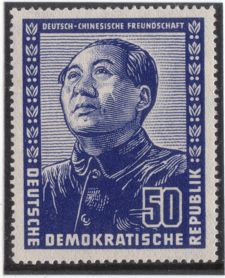The Maoist Enemy: China’s Challenge in 1960s East Germany
This article examines the challenge of Chinese communism in East Germany in the1960s. It shows how the Sino–Soviet Split and the Chinese Cultural Revolution endangered the public transcripts of East German state socialism by undermining its organizing metaphors and principles. Chinese cadres used their East Berlin embassy as a stage, showcase and megaphone for their dissenting vision of communism throughout the decade, winning some support from elderly communists, young anti-authoritarians and students from the Global South. Studying the East German campaign against what was known as ‘Mao Zedong Thought’ sheds light on the transnational traffic of actors and ideas within the Second World in the turbulent decade of the 1960s. The official and vernacular response to the Maoist challenge suggests that East German ideology was constituted by a double demarcation in the 1960s, against Western social democracy and capitalism to its right and Chinese communism to its left
This article, from the Journal of Contemporary History 0(0), makes for a pretty fascinating read. Uploaded by Quinn Slobodian on Academia.edu (also mirrored here).

Leave a Reply